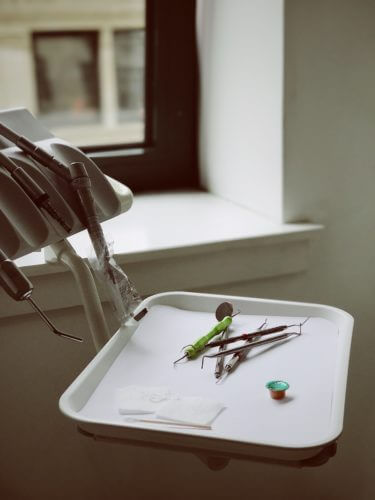DIY dentistry has become more and more popular in recent years as patients are looking for more natural or cost effective ways to deal with their health. While Pintrest has been a key proponent of terrible oral healthcare suggestions, even the grocery store sells DIY dental kits that can land you in a heap of trouble.
When it comes to your health, it’s typically safe to say that there are specialists for a reason. While it’s understandable that searching for home remedies may save some money, the consequences of the DIY approach are typically more expensive than the original problem.
“Naturally Healing A Cavity” – While it is true that in the beginning stages of a cavity (Before it’s actually a cavity), you may be able to stop and possibly reverse some of the negative effects. However, most of the DIY treatments are advertised as having “healed” cavities that are past the point of being saved. To understand all of this you have to understand the process of a cavity.
Cavities begin with plaque being left on the surface of the tooth and allowing bacteria to remain in place and produce acid that destroys the surface of the tooth (called the enamel). This destruction is referred to as decay or dental caries.
The beginning stages of a cavity is called “Demineralization” and is characterized by a white or brown spot on the tooth, discernible only to your dental professional. At this stage the damage is reversible and typically able to be healed through proper oral hygiene and the use of fluoride products that help to re-mineralize the tooth. It’s important to mention that healing a cavity at this stage is not an overnight one time solution. Changes to your daily routine have to be made to ensure that your teeth are being properly cleaned to prevent the bacteria from building up again. You can’t use fluoride once and expect for the cavity to disappear.
If the decay progresses past the point of demineralization, it will begin to eat away at the enamel (the tougher outer shell of your tooth) and into the dentin (the softer inner portion) of your tooth. At this stage the decay is now considered a cavity, as it has eaten a hole in the tooth. Once the decay has reached the dentin, no amount of proper oral hygiene or fluoride will prevent the spread or damage caused by the decay. Because dentin is a much softer tissue, it is much more susceptible to decay and it spreads much faster. This is typically when most patients experience the tell tale signs of a cavity, a dark spot on the tooth (dead tissue), or a hole that food gets packed into. A cavity is dead, demineralized tissue, as such you don’t feel pain. As more and more food gets packed into the cavity, the bacteria grows much faster and so does the cavity until it reaches the nerve in the center of the tooth.
If you aren’t dentally inclined, the best analogy would be to think of your tooth as a person. In the beginning stages the person is extremely sick and needs medications and proper care to get better. If they don’t receive that care, they will die. In the later stages, the person has extremities (Arms, legs, fingers, toes) that are dead, you have to amputate the dead extremities or the infection will spread and the person will die.
If you don’t treat the tooth, the cavity will grow, the nerve will die and the tooth can break. Eventually you will end up with an infection and the tooth may not be savable anymore.
“DIY Fillings or Crowns” – There are kits available at the grocery store, specifically designed for you to TEMPORARILY restore your tooth until you can be seen by your dentist. Unfortunately, all too many patients try to make these temporary fixes last as permanent restorations. The dangers in doing so are two fold, the first being that when a tooth breaks or has a cavity it needs to be addressed by a dentist. Teeth shouldn’t just break, usually when that happens there’s an underlying cause such as decay, and as we explained above, decay doesn’t just go away. It’s dead tissues, it can’t be resuscitated, there is no such thing as frank’n teeth. The second goes hand and hand with the first in that these teeth will ALWAYS get worse. The temporary fix isn’t stopping the spread of the decay, it’s also not protecting your tooth from chewing forces which means the tooth will only break more. Most patients that make this attempt end up with either much more costly restorations once they are seen, or they loose the teeth all together.
